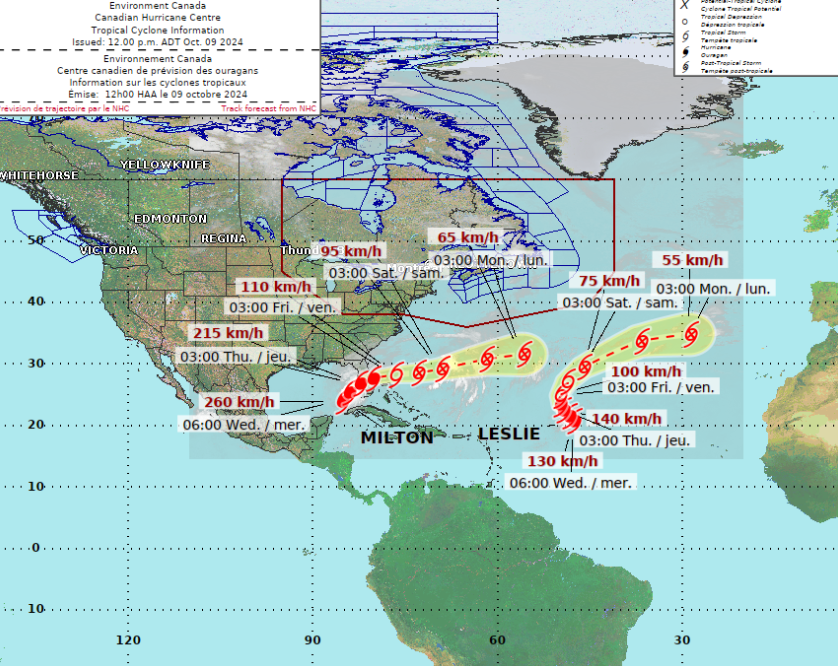Could Hurricane Milton track north to Atlantic Canada? Expert explains
Posted Oct 9, 2024 12:38:39 PM.
Last Updated Oct 9, 2024 01:50:36 PM.
Hurricane Milton is set to collide with Florida‘s west coast on Wednesday bringing devastation to the already battered state.
Over the last several days, officials in the U.S. have urged millions to evacuate as the Category 4 hurricane churns across the Gulf of Mexico toward the Tampa Bay and the Sarasota region. The area hasn’t seen a direct hit from a major hurricane in more than a century.
As it tracks east into the Atlantic Ocean, it is not likely to head north to Nova Scotia, 95.7 NewsRadio’s weather specialist explained.
“It’s going to weaken and become a post-tropical (storm) and dissipate over the Atlantic,” Allister Aalders said on The Todd Veinotte Show on Oct. 9.
Milton was 365 kilometres southwest of Tampa on Wednesday morning, with maximum sustained winds of 250 km/h — just 3 km/h shy of Category 5 status.
Despite the strength of the storm, Aalders noted that the atmosphere will not allow the storm to track into Canadian waters.
“We have this upper-level, low-pressure system that’s going to be spinning overhead through the end of the week and this weekend,” he said. “That’s putting the steering winds more west to east and south of our region.”

These conditions mean there’s “no risk” of Hurricane Milton tracking north toward Halifax. Aalders also noted that not often do Canadians feel the impacts of storms that track west to east.
“They start in the Caribbean or the Gulf, but they more often track in the north direction…They do start to curve towards the north and east as they move into our region,” he said. ” But it’s not too often that we see a storm make landfall approaching in a west-to-east direction, like what is going to happen with Milton in Florida.”
Officials have said Milton will be a deadly hurricane if people don’t get out before it makes landfall. Residents in the direct path of the system are being told to write their personal information on their bodies to be identified later if they don’t evacuate.
Although hurricanes like Fiona and Dorian wreaked havoc on the province, Aalders said Milton cannot compare.
“We’re talking about a Category 4 it’s very serious,” he said. “Milton’s also going to be expanding in size, so those impacts are going to be more widespread across Florida rather than contained to just one area.”
The sheer wind gusts and damage estimated from a Category 4 hurricane are much greater than the post-tropical storms that hit Nova Scotia.
Milton’s winds and storm surge are projected to reach as high as 3.6 metres in Tampa Bay and up to 4.5 metres farther south, between Sarasota and Fort Myers.
“With Fiona, we did have some devastating storm surges in parts of eastern Nova Scotia and certainly southwestern Newfoundland, P.E.I and eastern New Brunswick,” Aalders said. “But I mean certainly nothing near the magnitude of what the west coast of Florida will be experiencing tonight.”
With files from The Associated Press.








